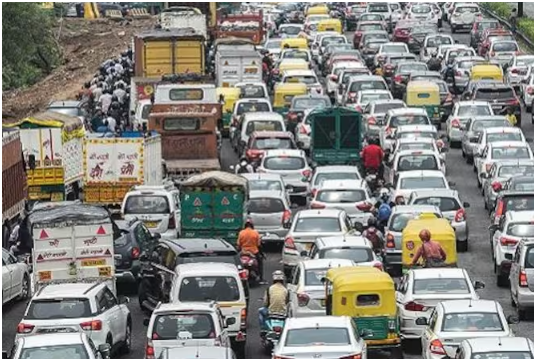Delhi Government Launches Initiative with 5,000 Traffic Cameras, Empowering Safety
Delhi transport department has unveiled plans to deploy 5,000 cameras
As part of an ambitious Intelligent Traffic Management System (ITMS), signaling a proactive move towards enhancing road safety and reducing traffic violations across the national capital. This comprehensive initiative aims to revolutionize traffic management by leveraging advanced surveillance technology and strategic enforcement measures.
According to officials familiar with the project, these cameras will be strategically positioned at key junctions throughout the city to monitor traffic flow and enforce compliance with traffic regulations. Initially intended for surveillance and issuing traffic challans, the cameras will eventually serve multiple functions, including traffic and signal management, as well as public announcements.

A tender was floated earlier this year to engage an agency tasked with installing the cameras and establishing an Integrated Command and Control Centre (ICCC). However, the initial tender failed to attract bidders due to the revenue sharing model based on a per challan basis. Following revisions to the tender, a renewed effort was launched last week to solicit bids from interested parties.
Under the revised terms of the tender, the selected agency will be responsible for deploying cameras equipped with an Automatic Number Plate Recognition (ANPR) system to monitor 16 traffic violations. Additionally, within a three-year timeframe, the agency must establish the requisite ICCC infrastructure and ensure sufficient storage capacity to retain video footage and data for up to five years. Integration with the government’s E-challan portal is also a key component of the project.
This initiative is a collaborative effort spearheaded by Delhi’s road safety committee, chaired by the transport department and comprising representatives from various government agencies, including the traffic police, Public Works Department (PWD), education, and health departments.
While the Delhi Traffic Police have already installed 329 cameras to monitor red light violations, other agencies, including the Delhi Police, New Delhi Municipal Council (NDMC), and PWD, have collectively deployed approximately 25,000 cameras at various locations across the city for surveillance purposes. Additionally, the transport department utilizes existing cameras at petrol pumps to enforce Pollution Under Control (PUC) violations.
According to transport department officials, the primary objective of the ITMS is to curb traffic violations on Delhi’s roads through effective enforcement measures, thereby enhancing safety for both pedestrians and motorists. Beyond issuing penalties, the system will facilitate targeted enforcement during special circumstances, such as the implementation of the odd-even rule or restrictions imposed during periods of poor air quality.
Experts emphasize the importance of a collaborative approach among government agencies in maximizing the potential of ITMS beyond mere enforcement. S. Velmurugan, chief scientist and head of traffic engineering and safety division at the Central Road Research Institute, suggests leveraging ITMS for signal coordination to alleviate congestion and ensure smooth passage for emergency vehicles and VIP movements.
In conclusion, the launch of the ITMS by the Delhi transport department heralds a significant advancement in traffic management and road safety efforts. By harnessing technology and fostering collaboration among stakeholders, Delhi aims to create safer and more efficient roadways for its residents and visitors alike.
This proactive approach towards traffic management aligns with Delhi’s broader vision of creating a smart and sustainable city that prioritizes the safety and well-being of its residents. By leveraging cutting-edge technology and innovative strategies, the ITMS initiative seeks to address longstanding challenges related to traffic congestion, violations, and road safety.
Moreover, the integration of advanced surveillance systems with the government’s E-challan portal represents a significant step towards digitizing and streamlining enforcement processes. This digitization not only enhances the efficiency of enforcement efforts but also promotes transparency and accountability in the handling of traffic violations.
Furthermore, the collaborative nature of the initiative, involving multiple government agencies and departments, underscores the importance of a coordinated approach to tackling complex urban challenges. By pooling together resources, expertise, and insights from various stakeholders, Delhi’s road safety committee can leverage collective strengths to drive impactful outcomes and deliver tangible benefits to the community.
For the latest updates-click here.
